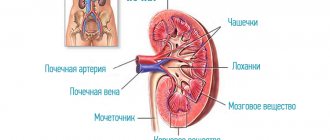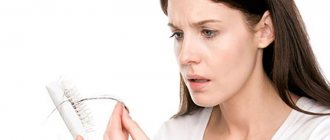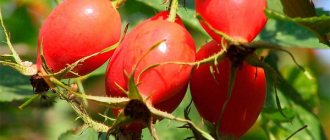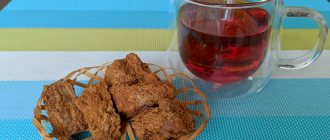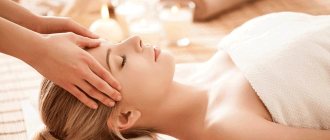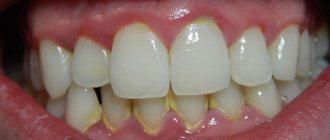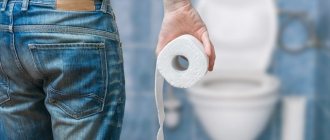In the last few years, a strange product has appeared on supermarket shelves and markets, which some have only heard of, while others have been actively using for many years - ginger root.
Its health benefits are undeniable. It is known for its healing properties against colds, flu and other ailments. It is used in cooking as a seasoning, in cosmetology, as an active component of various creams and masks. However, experts say that it can bring not only benefits, but also harm. But first things first. First, let's figure out what it is.
Product Description
If you have only seen ginger as a beige or yellowish-gray root, then you will be interested to know what the whole plant looks like. The plant is a perennial. Its home countries are predominantly in tropical and subtropical climates (Australia, India, Barbados, South Asia). The largest exporter is China.
You can grow ginger in your own garden or on a windowsill, although this will require creating favorable conditions. It is a trunk like a reed, about one and a half meters in height with spike-shaped inflorescences. Flowers can be various shades of yellow, as well as from beige to brown. The plant reproduces by rhizomes. The roots themselves are in the form of medium-sized tubers (somewhat reminiscent of Jerusalem artichoke roots, but flatter). They are used after peeling them. In the middle, the root is fleshy and sinewy, it contains a lot of juice. The taste is a combination of hot, spicy and sweet.
Use both fresh roots and dried, crushed into powder. You can see them sugared or pickled (often served as a condiment for sushi). Of course, the best and healthiest thing is fresh roots. As a seasoning, they are added to various meat, vegetable and fish dishes; they make tea with them. In Europe, the plant became known in the middle 14th centuries, when sailors brought it there. It gained particular popularity at a time when the plague was raging in Europe. People believed that its medicinal properties protected against plague infection. The plant began to be widely used in the 16th century, after it was brought to America.
Composition of ginger and its calorie content
Ginger is a unique combination of microelements and vitamins. It includes:
- Gingerol (promotes weight loss)
- Essential oils
- Terpenes (widely used in the cosmetics and perfume industries; in medicine - as part of anthelmintic drugs, expectorants, antiseptics)
- B vitamins (B1-B6, B9)
- Vitamin C (ascorbic acid)
- Vitamin E
- Vitamin K
- Macroelements: sodium, calcium, magnesium, phosphorus, manganese, copper, iron, selenium, zinc
- Citral (starter compound for vitamin A production)
Calorie content – 80 kcal/100 grams. Carbohydrate content 15%.
Carbohydrates
| Name | Quantity | % RDN |
| Total carbohydrate content | 17.77 g | 6% |
| Mono- and disaccharides | 3.39 g | 6,8% |
| Glucose | 1.2 g | 0,7% |
| Fructose | 1.5 g | 0,9% |
| Galactose | 0.0 g | 0% |
| Sucrose | 0.7 g | 0% |
| Lactose | 0.0 g | 0% |
| Starch | 4.0 g | 0% |
| Maltose | 0.0 g | 0% |
| Cellulose | 2.0 g | 10% |
Benefits of ginger
The roots of the plant are of greatest value to humans. For medicinal and preventive purposes, it is worth using fresh rhizomes, and dried ginger is suitable as a spice in cooking.
Beneficial features:
- Helps with seasickness and toxicosis in pregnant women, relieves nausea (fresh (chew a piece) or as a drink)
- Promotes digestion and speeds up metabolism
- Eliminates flatulence, bloating, colic
- Has a mild laxative effect
- Helps strengthen teeth and gums (rinse or apply grated root paste)
- Normalizes blood circulation, reduces blood pressure, strengthens the heart muscle
- Used in the fight against helminths
- Has a general strengthening and tonic effect on the body
- Positively affects memory
- Improves skin quality
- Reduces acne.
- Helps with depression and mental disorders (the root itself or essential oil).
Benefits for women
It is documented that ginger has been used as a medicinal plant for more than three thousand years. Ancient Chinese healers, as well as Avicenna and Hippocrates, wrote about its amazing beneficial properties.
Almost all of the positive effects listed above are equally beneficial for the human body, both female and male. But, due to the characteristics of the body of each gender, additional areas of health can be identified where it invariably has a healing effect.
We shouldn’t ignore purely women’s problems. The plant is known to reduce pain during menstruation. Since ancient times it has been used in the treatment of infertility. And, as we have already said, this healing root helps relieve nausea during toxicosis in pregnant women. It should be noted that this only applies to the first trimester of pregnancy. At later stages (second or third trimester) it is better to abstain from it, because it lowers blood pressure, and this can harm both mother and child. Eating rhizomes has a beneficial effect on the female organs, in particular the uterus.
The benefits for the body are not limited to this. Ginger is considered an aphrodisiac plant (i.e., it helps increase sexual desire) due to the fact that it improves blood circulation and promotes blood flow to the pelvic organs.
The dietary properties of the product are also well known. It improves metabolism in the body, removes toxins and waste, and the body begins to burn fat reserves. Due to its properties, the plant is present in many diets.
Benefits for men
What can be especially highlighted from this amazing plant that is beneficial for men’s health? In Chinese, the name “ginger” sounds like “masculinity”, and it fully lives up to its name, having a positive effect on the entire male immune system in a comprehensive manner, in a wide spectrum.
The root is considered a masculine spice and has been used by the Chinese as an aphrodisiac since ancient times. Essential oils, vitamin C and lysine in its composition increase potency and improve the tone of the muscles of the genital organs. This is due to the fact that it increases blood circulation and blood flow to the organs of the genitourinary system.
Also having anti-inflammatory properties, it prevents or reduces the development of prostatitis, and is even used in the treatment of male infertility. The immunological properties of the root should not be underestimated. Its use helps to increase vitality and improve memory.
Benefits for immunity
Ginger is a powerful natural antioxidant that neutralizes free radicals and slows down oxidation processes that aggravate the course of influenza and other infectious diseases. Ginger has an anti-inflammatory, analgesic, detoxification effect, accelerates metabolism, activates the nervous system, and also well compensates for the lack of vitamins and microelements in the human body.
It is possible to find out the characteristics of your immune system, understand how much your body is able to resist infections and get a personal plan for strengthening your immune system thanks to genetic analysis.
In cosmetology
All people tend to pay attention to external beauty. The condition of our hair and skin is important to us. For centuries, ginger has been used as a base or additional ingredient in cosmetics. It can be added to shampoo or hair masks. You can also rub the plant juice separately into your scalp. Thanks to its properties, hair will acquire a healthier appearance, become stronger, and dandruff will go away.
It is also a very powerful antioxidant, so its regular use frees the body of toxins and removes released radicals. The skin is cleansed, rejuvenated, looks more well-groomed, and acquires a healthy color. For those whose skin is prone to breakouts (for example, teenage acne), it will be useful to know that plant derivatives act as an antiseptic and have bactericidal properties. In pharmacies you can find skin care products with its extract.
On store shelves and pharmacies you can see product lines that contain ginger root. These can be shampoos, hair masks, caring oils. They are mainly intended for oily and normal hair. The healing components of the plant help eliminate dandruff, improve blood circulation in the hair follicles and strengthen the hair.
This plant is often included in anti-cellulite creams and gels, because it helps improve metabolism in tissues and organs, improves blood circulation, and eliminates “orange peel.”
The plant extract is included in facial skin care products. Due to its anti-inflammatory and antiseptic effects, it promotes wound healing and eliminates acne. Products containing it are ideal for oily and combination skin. Skin prone to rashes and acne. The substances included in its composition whiten, eliminate freckles and age spots.
The extract tones, improves blood circulation, giving facial skin a healthier, more radiant, toned appearance. Due to its antifungal properties, the extract is included in antifungal products and foot creams.
Harm and medical contraindications
Despite all the listed beneficial properties of the plant, it is not a panacea. Even the best medicine has contraindications. Healing ginger is no exception. Let's talk in more detail about contraindications, and what harm to health can be in different situations.
First of all, about people with serious disorders of the cardiovascular system. If you have stage 2 or 3 hypertension, doctors do not recommend consuming the root. Why? As already mentioned, it has the property of thinning the blood. Therefore, in combination with antihypertensive drugs, blood pressure can sharply decrease, and this is life-threatening. For stage 1 hypertension, the plant will help reduce blood pressure. But you still need to use it carefully.
Also, people with coronary heart disease, who have had a stroke or a pre-stroke condition, a heart attack or a pre-infarction condition should not use the root and its derivatives.
Now about gastrointestinal diseases. Gingerol and other substances that make up ginger give it a pungent taste. This means that people with stomach diseases should avoid it, because... it can have an irritating effect on the mucous membrane. Such diseases include: colitis, enterocolitis, ulcers, gastritis, diverticulitis, diverticulosis.
For the same reason, use is contraindicated if there is damage to the oral mucosa. Liver diseases such as hepatitis, cirrhosis, cholelithiasis are also contraindications for use. Not recommended for use by children under two years of age. It can be given to older children with caution to avoid an allergic reaction.
Let us repeat once again that pregnant women can use the plant and its derivatives only in the first trimester to relieve the symptoms of toxicosis. In the second and third trimester, it is dangerous for the life of the fetus and mother, as it can greatly reduce blood pressure.
Most people use the root for colds. But you should not use it if you have a fever, because it itself causes a feeling of heat. Bleeding from hemorrhoids, uterine bleeding, frequent nosebleeds are also contraindications.
Although it is recommended for use by people suffering from diabetes, combination with antidiabetic drugs is prohibited. You cannot combine the medicine with antiarrhythmic drugs and hypotonic drugs. In case of overdose, the following are possible: nausea, vomiting, diarrhea. In this case, you need to stop using immediately.
Selection rules
The root can be found on sale in several forms: fresh, dried and pickled - different storage methods for different purposes. The dried root is well suited for use as a spice. When choosing a dried product, you need to inspect its surface for fogging and mold - of course there should be none. There should be no lumps in the ground product.
For medicinal purposes, it is best to choose fresh roots. Products often remain stale on supermarket shelves. If storage conditions are violated, the root becomes dry, wrinkled or begins to rot. Choose heavier roots, hard and dense, they contain more juice. The benefits of fresh foods are always, undoubtedly, higher than dried or pickled ones.
The marinade is equally suitable for preparing dishes and for preventing diseases. It is slightly worse than fresh root, and still retains many active trace elements and nutrients. Storing marinade is easier than dry product and its shelf life is much longer. If ginger is imported from distant hot countries, then the pickled version will be of higher quality than the dried one.
Joint problems
It is believed that the root should be taken for arthritis, arthrosis, gout and other rheumatoid conditions, as it has a general anti-aging effect. So far, apart from hypotheses and the absence of joint problems among Asian people who regularly eat ginger, there is nothing to prove the effectiveness of the root in this area, but you can try this method of treatment with peace of mind: with sore joints, ginger can in no way worsen the situation.
Can it replace medications: no, but can serve for preventive purposes. How to use: Again, it would be correct to use the root on an ongoing basis, but in the case of joints, the root will not be able to cope with pain and inflammation alone, so a visit to the doctor and drug treatment, especially for severe purposes, is strictly necessary. Application form: Ginger drinks, fresh ginger in other dishes.
Storage conditions
There are several options for storing ginger at home. It is better to store fresh roots in the refrigerator, pre-packed in cling film. The film will protect the roots from drying out. This way it will keep for up to two weeks. Can be frozen in the freezer. Then it is better to first clean and cut the roots for ease of use.
An alternative way is to dry it a little and wrap the plant in thick paper. Can be stored at room temperature in a dry place - shelf life is about a month. The dried product is stored mainly in fabric bags in a dry place at room temperature - shelf life is up to six months.
Another option is to grate or cut into thin slices and dry in the oven at a temperature of 500. Readiness can be determined by touch (ready-made slices break easily). In this form, it can be stored in a tightly closed jar for up to several years.
Another way is to pour honey over the ginger. This will mutually enhance the properties of ginger and honey. The shelf life of such a product is up to six months.
The shelf life of such a product is up to six months. Candied fruits are made from parts of the plant, as well as marinade - it must be stored in a tightly closed container.
If you have a lot of fresh produce, you can squeeze juice out of it using an electric juicer. It is not recommended to store or consume the juice in its pure form. Usually, an alcohol tincture is prepared from the juice, or from the root cut into slices - 50 to 50 juice and alcohol. A tightly closed bottle of tincture can retain healing properties for up to 3 years. But, if the bottle has already been opened, then you can use the contents within 21 days; on the 22nd day, everything that remains should be thrown away.
The tincture is consumed several times in tea, warm milk or fruit drink. Attention! The tincture is not added to hot drinks. The tincture is used to treat colds and infectious diseases.
Depressed libido
Thanks to increased blood circulation, the root can solve the problem of impotence and depressed desire in both men and women, and the essential oils contained in ginger work as an aphrodisiac.
Can it replace medications? Probably not, it acts as an aphrodisiac. How to use: If impotence is caused by a serious illness or stress, then ginger will not help, but it can provide blood flow to intimate places, correcting the situation with impotence due to, for example, fatigue. Form of application: Only fresh root, not subjected to heat treatment, as essential oils are preserved in it as much as possible.
Prepare ginger sweets, such as marmalade or lollipops, that you can treat your significant other with
